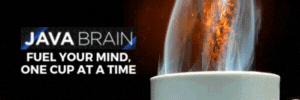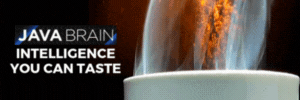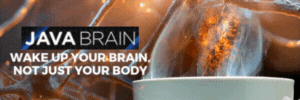You already know what chaos feels like. That 3 PM crash when you're in back-to-back Zoom calls and feel like your soul is evacuating through your eyeballs. The Sunday night dread that starts creeping in around 4 PM. When your partner asks "what's wrong?" and you genuinely don't know but everything feels heavy and uncomfortable.
You begin your day with the best intentions—meditation, clean eating, staying grounded—yet by dinner, you're doomscrolling Instagram while eating cereal and wondering why nothing works. Meanwhile, your meditation app somehow makes you feel worse, and that "just breathe" advice feels like telling someone with food poisoning to just digest better.
Modern life systematically overwhelms our biological systems. We evolved for physical challenges and tribal communities, not constant digital stimulation and social isolation. Your anxiety, depression, and chronic stress represent predictable responses to an environment that conflicts with your basic biology.
Most wellness advice gets this fundamentally wrong: trying to fix your thoughts without addressing your nervous system is like trying to change your car's direction while ignoring the steering wheel. Worse, the "good vibes only" culture actively makes regulation harder by shaming you for having normal stress responses.
The wellness industry won't tell you this because it ruins their business model: sometimes you're having a normal biological reaction to an abnormal environment. That "intuition" might be anxiety in disguise. And feeling everything deeply sometimes signals a nervous system that needs support.
How Your Nervous System Controls Anxiety and Stress Responses
Your autonomic nervous system operates through two main branches that control your body's stress and relaxation responses every moment of every day.
The Sympathetic System prepares you for action—increasing heart rate, releasing stress hormones, and sharpening focus. This "fight-or-flight" response served our ancestors well when facing immediate physical threats like lions, not LinkedIn notifications.
The Parasympathetic System promotes rest, digestion, healing, and social connection. This "rest-and-digest" state allows your body to recover, repair, and restore itself like a biological maintenance crew.
Problems arise when modern life keeps you stuck in sympathetic overdrive. Constant notifications, work pressure, financial stress, and social media create chronic activation that exhausts your system and makes genuine calm nearly impossible. It's like running your car engine in the red zone 24/7—eventually something breaks.
The Science Gets Messy (And Why That's Actually Good News)
Science threw us a curveball in 2023 that made the wellness industry collectively shit their matching yoga pants. Researchers demolished the foundational theory behind most nervous system work—polyvagal theory—showing that its five basic premises don't hold up under scrutiny like a house of cards in a wind tunnel.
Something hilarious happened: the techniques kept working anyway.
Healthcare workers reduced stress, PTSD risk, and anxiety with just 5 HRV biofeedback sessions. Long COVID patients showed significant autonomic improvements from slow-paced breathing. Cold exposure studies revealed 29% reduction in sickness absence and measurable stress reduction 12 hours post-exposure.
Your nervous system responds to effective stress management techniques regardless of the underlying theory. This discovery validates practical approaches to anxiety relief and emotional regulation that work consistently across different populations.
Ancient Wisdom Meets Modern Individualization
Thousands of years before Western science understood individual nervous system differences, Traditional Chinese Medicine described similar concepts through personalized constitutional types and "Shen"—the radiant consciousness that governs emotional balance.
In TCM, clear Shen manifests as eyes that sparkle with life, emotional stability during challenges, mental clarity and focus, and genuine calm that others can feel. Disturbed Shen appears as anxiety and restlessness, emotional volatility, mental fog and confusion, and insomnia and fatigue.
TCM's genius was recognizing that different constitutional types require different approaches. Wood types need movement and expression. Earth types need grounding and routine. Metal types need structure and precision. Modern science validates this ancient insight: nervous system regulation works like personalized medicine, not one-size-fits-all solutions.
Why Personalized Anxiety Management Strategies Work Better Than Generic Advice
The research reveals something that should piss you off: most nervous system advice treats everyone the same, and that's exactly why it doesn't work. Worse, it creates new forms of perfectionism where people judge themselves for not being able to "just calm down" like some zen master who's never dealt with a mortgage payment.
Think about it like a car stereo. Some people need the bass cranked to feel balanced, others need treble, and some need everything at 3. Your nervous system has similarly specific needs that generic advice completely ignores like a colorblind person giving makeup tips.
Your coworker whose mere presence makes your nervous system activate like a smoke detector? That's not you being dramatic—nervous system states are more contagious than a yawn in a board meeting, and some people genuinely dysregulate others just by existing in the same zip code.
That friend who makes you feel instantly calm versus the one who leaves you feeling like you've been emotionally mugged? Different nervous system signatures affect each other in measurable ways. Your body knows before your mind does, like a human early warning system.
Understanding Different Nervous System Types for Effective Stress Management
Understanding your type changes everything about which techniques will work for you versus which ones will make you feel worse. There are four primary patterns to recognize:
ADHD Nervous Systems need stimulation and novelty to engage regulation responses.
Highly Sensitive Nervous Systems require reduced stimulation and gentle approaches.
Trauma-Informed Nervous Systems need specialized safety-first approaches.
Attachment-Style Nervous Systems follow predictable patterns based on early relationship experiences.
The ugly truth that nobody wants to admit: forcing yourself to use techniques that don't match your nervous system type can make things worse than doing nothing. That's why some people leave meditation retreats more anxious than when they arrived, like going to a spa and coming home with a rash.
How to Assess Your Nervous System Type for Personalized Anxiety Relief
Rather than following cookie-cutter approaches that ignore your individual biology like a one-size-fits-all straightjacket, successful nervous system regulation begins with brutal honesty about your current patterns and needs.
Step 1: Identify Your Stress Response Pattern
How do you actually respond to stress? Most people lie to themselves about this harder than a politician during election season. Do you fight (get angry, blame others, turn into a verbal chainsaw), flight (work obsessively, stay busy like a caffeinated hamster), freeze (can't make decisions, feel paralyzed like a deer in headlights), or fawn (become overly helpful, lose your boundaries faster than a people-pleaser at a yard sale)?
Step 1: Identify Your Stress Response Pattern
How do you actually respond to stress? Most people lie to themselves about this harder than a politician during election season. Do you fight (get angry, blame others, turn into a verbal chainsaw), flight (work obsessively, stay busy like a caffeinated hamster), freeze (can't make decisions, feel paralyzed like a deer in headlights), or fawn (become overly helpful, lose your boundaries faster than a people-pleaser at a yard sale)?
Step 2: Determine Your Nervous System Type
ADHD Nervous Systems operate on "interest-based activation" requiring novelty, urgency, or passion to engage parasympathetic responses. Standard meditation often fails because it lacks the stimulation needed to capture ADHD attention—like asking someone to get excited about watching paint dry in slow motion. These people need more activation to feel calm, which sounds backwards but makes perfect biological sense, like how some people need noise to sleep.
Highly Sensitive Nervous Systems (15-20% of the population) process sensory information more deeply and require modified environments with reduced stimulation. Open offices are literal torture chambers for these nervous systems—imagine trying to meditate in a construction zone. What feels relaxing to others can overwhelm their systems like trying to drink from a fire hose.
Trauma-Informed Nervous Systems have learned to detect danger everywhere as a survival mechanism. Certain body positions make them feel panicked or unsafe. They dissociate or "leave their body" during stress. They have difficulty staying present during any body-focused practice. These systems need specialized approaches that honor their protective mechanisms.
Attachment-Style Nervous Systems follow predictable patterns. Avoidant types shut down when people get emotional—they literally can't access feelings during dysregulation, like emotional diabetes. Anxious types become activated when people seem distant, creating the person who "feels everything" and gets told they're "too much" by people who feel nothing.
Step 3: Map Your Environmental Sensitivity
What environments genuinely calm you versus the ones you think should? Maybe nature makes you anxious because you can't control it and there's no WiFi. Maybe loud music actually helps you focus better than a library. Maybe you need more stimulation, not less, which goes against everything Instagram wellness tells you.
How sensitive are you really? Can you handle crowded restaurants, bright lights, multiple conversations happening at once? Or do you need advance warning, escape routes, and recovery time after social activities like you're planning a military operation?
Step 4: Recognize Your Activation Patterns
Are you dealing with anxiety or depression or both? Over-activation and under-activation require completely different approaches—trying to calm an already shut-down system can make depression worse like adding sleeping pills to someone who's already unconscious.
Step 5: Acknowledge Your History
What's your actual trauma history? Not just the big obvious stuff, but the smaller experiences that shaped your nervous system's threat detection like a paranoid security system. That critical parent who made you walk on eggshells, the bullying at school that taught you the world isn't safe, the medical procedures nobody talks about anymore, the accidents that left invisible scars.
Step 6: Choose Your Starting Point
Based on your assessment:
- High sensitivity types: Start with environmental modifications and gentle techniques
- ADHD types: Begin with movement-based or stimulating practices
- Trauma-informed types: Seek professional guidance before attempting self-regulation
- Anxious attachment: Focus on grounding and containment techniques
- Avoidant attachment: Work on gentle activation and feeling-based practices
Science-Backed Nervous System Regulation Techniques That Actually Work
Forget 20-minute meditation sessions you'll never maintain like a New Year's gym membership. The research shows micro-techniques win in daily life, but timing matters more than anyone admits—like comedy, it's all about timing.
Your cortisol follows a daily rhythm like a moody teenager. Morning techniques need to work with higher activation levels, not against them. Evening approaches should support the natural wind-down, not fight it. Trying to force deep relaxation at 10 AM when your system wants to be alert creates internal conflict like trying to nap at a rave.
The Physiological Sigh: Fastest Way to Activate Your Vagus Nerve
Stanford research identifies the physiological sigh as the most effective rapid vagus nerve activation technique for immediate anxiety relief. Think of it as the emergency brake for your autonomic nervous system.
Take a normal inhale through your nose, then take a second, smaller inhale on top of the first (like you're trying to squeeze every last bit of air into your lungs), followed by a long, slow exhale through your mouth like you're deflating a balloon.
This pattern maximizes oxygen exchange and directly activates your vagus nerve, shifting you from "everything is on fire" to "maybe I can handle this" in 30-60 seconds. A breathing training device can help maintain consistent timing during HRV practice sessions and breathing exercises.
Use this before stressful conversations, when feeling anxious, or anytime you need rapid regulation without looking like you're having a breakdown. Healthcare executives and sales professionals report 25-40% stress reduction using this technique during meetings and presentations—basically becoming more regulated than their colleagues who are still running on anxiety and caffeine.
Important note: During an active panic attack, any breathing technique can backfire by increasing your focus on physical sensations like a hypochondriac with WebMD. Know the difference between stress and true panic—one responds to breath work, the other needs grounding techniques first like finding your feet on the floor and remembering you're not actually dying.
Heart Rate Variability (HRV) Training for Stress Resilience
Heart Rate Variability (HRV) measures the variation between heartbeats and reflects your nervous system's stress resilience. Higher HRV generally indicates better ability to handle stress and recover from anxiety—your heart can adapt fluidly rather than being stuck in a rigid pattern like a broken metronome.
The optimal rhythm for HRV training: Breathe in for 5 seconds, out for 5 seconds. This creates approximately 6 breaths per minute. Focus attention on your heart area while breathing. Practice for 5-10 minutes daily.
This specific rhythm creates what researchers call a 0.1 Hz frequency that maximizes coordination between your heart and brain. You're literally training your heart and mind to work in sync instead of fighting each other.
Many people track progress with an HRV monitoring device and biofeedback apps or smartwatch that show real-time changes in heart rhythm patterns. Watching your heart rate variability increase as you breathe reinforces that you actually have influence over your internal state—a powerful realization for anyone who's felt completely at the mercy of anxiety.
Quick Stress Relief Techniques for Daily Life
Box breathing for workplace anxiety: 4 counts in, 4 counts hold, 4 counts out, 4 counts hold. Nobody notices, everyone benefits. Perfect for those moments when your boss is talking and you realize you've been holding your breath for the entire explanation.
Bathroom break stress relief: Use those 2 minutes for rapid nervous system resets. The only private space most people get during workdays becomes your regulation sanctuary.
5-4-3-2-1 grounding technique for anxiety: Notice 5 things you see, 4 you hear, 3 you feel, 2 you smell, 1 you taste. Transforms road rage into nervous system training.
The commute transition: Instead of immediately checking your phone when you get in the car, take 30 seconds to notice your body in the seat. This single moment creates a buffer between work stress and home life.
The minimum effective dose: Research shows 2 minutes of daily practice maintains nervous system flexibility. Consistency trumps duration, but most people try to go from zero to hero and burn out within a week. Many people find that using a comfortable meditation cushion helps maintain proper posture during longer HRV training sessions.
Natural Ways to Support Your Nervous System and Reduce Anxiety
Your nervous system responds to everything—from what you eat to how you sleep to the lighting in your workspace. Address these foundational elements and your regulation techniques become exponentially more effective.
The Gut-Brain Connection: How Diet Affects Anxiety and Mood
Your gut contains more neurotransmitters than your spinal cord and directly influences your emotional state through the vagus nerve. The kicker: 90% of your body's serotonin is produced in your gut, not your brain.
Supporting gut health often improves anxiety and mood more effectively than targeting the brain directly. Research shows 3 servings of fermented foods weekly may reduce anxiety by 30%—likely because beneficial bacteria influence neurotransmitters and reduce inflammation.
Fermented foods like kimchi, kefir, and sauerkraut introduce beneficial probiotics directly into your system. High-quality probiotic supplements with diverse bacterial strains work when fermented foods aren't your thing. Prebiotic fiber feeds your good gut bacteria, while L-glutamine supports intestinal lining integrity.
Researchers now call certain probiotics "psychobiotics" for their ability to improve mood. Some gut bacteria actually produce GABA—the calming neurotransmitter that reduces anxiety. Many people track gut health and mood correlations using wellness journals to identify personal patterns. You might discover your anxiety spikes after too much sugar or that you feel especially stable on days you eat probiotic-rich foods.
Sleep Optimization for Nervous System Recovery and Anxiety Reduction
Quality sleep directly determines your nervous system's recovery capacity and stress resilience. Poor sleep makes anxiety regulation nearly impossible, regardless of technique quality. Think of sleep as the time when your body repairs your "wiring," clears metabolic waste from the brain, and resets stress hormone levels.
Most people sleep best in cool, dark environments around 65-68°F. Blue light blocking glasses worn 2 hours before bed help because blue-spectrum light tricks your brain into thinking it's daytime, suppressing melatonin. Consistent sleep and wake times regulate your circadian rhythm, while sleep tracking devices can reveal patterns you might miss otherwise.
Magnesium glycinate tends to have a calming effect on the nervous system and can improve sleep quality, especially if you're deficient. L-theanine from green tea promotes relaxation without sedation by increasing alpha brain waves and boosting GABA and serotonin levels. White noise machines help drown out sudden sounds that might wake you—consistent sound signals safety to your brain.
Make your evenings a sanctuary for recovery. The 1-2 hours before bed become your wind-down ritual: dim lights, shut off work thoughts, maybe gentle stretching or reading something uplifting in print to avoid screens. Better sleep directly translates to more regulated mood and balanced energy.
Exercise and Movement for Stress Relief and Nervous System Balance
Different types of movement influence nervous system regulation and anxiety relief in distinct ways. Research shows Tai Chi and Qigong reduce anxiety by 35% through gentle, rhythmic movements that activate parasympathetic responses.
Daily walking, especially in nature, provides rhythmic movement that entrains calm in your body. There's a concept in Japan called Shinrin-yoku or "forest bathing"—walking mindfully in natural environments lowers cortisol levels, reduces blood pressure, and improves heart rate variability. Gentle yoga or stretching with yoga blocks for support downshifts an overactive sympathetic system through the combination of movement, breath, and often spiritual components.
Light strength training with resistance bands can build empowerment when approached mindfully with slow, controlled movements and conscious breathing. The key is choosing movement that energizes rather than exhausts your system. High-intensity exercise activates the sympathetic system, which can be beneficial in moderation but counterproductive if you're already burned out.
Don't underestimate playful movement either. Dancing in your living room, gardening, or playing with a pet all release tension and bring you to the present moment—exactly what your nervous system needs to find equilibrium.
Environmental Factors That Impact Your Nervous System and Stress Levels
Your nervous system constantly scans for safety or danger through subconscious "neuroception." You can optimize your environment to support stress reduction through environmental cues most people completely ignore:
Lighting and anxiety management: Harsh fluorescent lights keep your system in low-level activation. Full-spectrum desk lamps that mimic natural light can shift your state within minutes.
Color psychology for stress reduction: Cool blues and greens activate parasympathetic responses, while warm reds and oranges increase alertness. Your bedroom walls might be sabotaging your sleep.
Sound frequency and nervous system regulation: That co-worker who talks too loudly isn't just annoying—certain frequencies genuinely dysregulate some nervous systems. Noise-canceling headphones become medical devices, not luxury items.
Texture and nervous system comfort: Soft, consistent textures support regulation, while rough or unpredictable ones increase activation. This is why some people need weighted blankets and others find them overwhelming.
If you can't control temperature, lighting, or noise, you can still influence your microenvironment. A small desk plant, personal lighting, and a stress-relief fidget tool create nervous system cues that you're in a safe space.
Natural Supplements and Herbs for Nervous System Support
Adaptogenic herbs help your body resist stress and restore nervous system balance. Three of the most researched adaptogens work by modulating your central stress response system. Ashwagandha normalizes cortisol rhythms and supports thyroid function often compromised by chronic stress. Reishi mushroom provides gentle calming effects without sedation while supporting immune function. Schisandra berry enhances mental clarity and reduces stress-related cognitive fog.
These aren't sedatives but rather normalizing substances that help your system find its natural balance. Quality matters with herbs—look for reputable brands or consult a trained herbalist.
Ancient traditions emphasized the heart as a nexus of physical and spiritual well-being. Modern science validates this wisdom: generating heartfelt positive emotions creates measurable changes in heart rhythms that improve communication between heart and brain. Many people combine traditional heart-focused meditation with modern HRV biofeedback devices. You practice generating appreciation or compassion while watching real-time feedback on your heart rhythm coherence. It's a beautiful blend of ancient practice with cutting-edge biometric feedback.
Advanced Nervous System Regulation Techniques for Long-Term Stress Management
Once you have foundation practices in place and can reliably shift your state using basic techniques, you can explore more advanced approaches that build genuine resilience rather than just managing symptoms.
Cold Therapy for Stress Resilience and Dopamine Boost
Research suggests that controlled, brief stress exposure followed by recovery can build nervous system resilience—similar to how exercise stresses muscles to make them stronger. This concept, called hormesis, explains why some controlled stress can improve anxiety management over time.
Cold exposure research for anxiety and mood: Recent systematic reviews analyzing thousands of participants show that brief cold exposure can boost dopamine by 250% above baseline—and this elevation persists for hours. Unlike the spike-and-crash of stimulants, cold-induced dopamine creates a lasting afterglow of improved mood, focus, and stress resilience.
Regular cold exposure may train your autonomic nervous system to handle stress better by exercising the "dive reflex" and vagal circuits. People often emerge from cold showers feeling invigorated and oddly positive—that's measurable neurochemistry at work.
Start with 15-30 seconds of cold water at the end of your warm shower, gradually increasing to 1 minute or more as tolerated. A waterproof shower timer helps track your cold exposure time and build consistency with the practice. Focus on lengthening exhales and relaxing muscles when the cold hits. Practice 2-3 times weekly with ample warm recovery afterward.
Cold exposure becomes a kind of meditation—teaching you to find calm in the midst of intensity. This skill directly translates to life's other challenges: difficult conversations, deadlines, unexpected crises. Cold exposure isn't appropriate for everyone, especially those with heart conditions or severe stress disorders. You can get similar hormetic benefits from saunas, high-intensity exercise, or other controlled stressors followed by recovery.
Heart-Brain Coherence Training for Emotional Regulation
Beyond basic nervous system regulation lies the fascinating world of heart-brain synchronization for emotional regulation. Research shows that when you experience emotions like gratitude, love, or appreciation, your heart and brain enter a synchronized rhythm that scientists can measure—called heart-brain coherence.
In this coherent state, cognitive function improves, intuition seems heightened, and you feel "in flow." Your heart actually sends more information to your brain than your brain sends to your heart, making heart-focused practices surprisingly powerful.
Focus attention on your heart area while breathing rhythmically. Generate genuine feelings of appreciation, care, or compassion. Notice how positive emotions affect your sense of calm and clarity. Practice for 5-10 minutes daily, especially during stressful periods.
Some people use real-time HRV feedback devices to observe how emotions influence their nervous system state. These apps often gamify the process—showing a butterfly or balloon that stays afloat when you're in coherence. You learn to shift from frustration (creating jagged heart rhythms) to compassion (creating smooth, sine-wave patterns).
Loving-Kindness Meditation for Anxiety and Stress Relief
This traditional meditation systematically sends well-wishes to yourself and others: "May I be safe, may I be happy, may I be healthy." You then extend these wishes to loved ones, neutral people, difficult people, and finally all beings. Studies show that loving-kindness meditation increases vagal tone and positive emotions while reducing stress responses and anxiety symptoms. You're essentially practicing joy and compassion like skills, which cushions you against daily stressors and builds genuine resilience.
Performance Applications
When your autonomic system runs smoothly, everything else—cognitive function, athletic performance, creativity, longevity—improves dramatically.
Cognitive enhancement: Use HRV breathing before important meetings or presentations. Cold exposure in morning provides sustained dopamine and focus. Strategic stress breaks maintain cognitive flexibility throughout the day. Evening regulation practices optimize memory consolidation during sleep.
Athletic performance: Pre-workout breathing optimizes arousal levels. Post-workout parasympathetic activation enhances recovery. Competition day nervous system preparation routines improve performance under pressure.
Longevity benefits: Consistent daily practices compound over decades. Vagal tone activation reduces systemic inflammation linked to age-related diseases. Balanced autonomic function supports healthy hormone production.
Safety Guidelines for Nervous System Regulation and Anxiety Management
The research exposes serious safety gaps that the wellness industry actively ignores because acknowledging them would hurt profits faster than admitting essential oils don't cure everything.
When Breathing Exercises and Mindfulness Can Worsen Anxiety
Why "just breathe" advice can be harmful: For trauma survivors, certain breathing patterns can trigger flashbacks or dissociation like hitting a hidden landmine. The instruction to "focus on your breath" can send someone into a panic spiral if their nervous system associates deep breathing with past danger or assault.
The mindfulness trap: Increased awareness can initially make you feel worse by highlighting how dysregulated you actually are—like turning on the lights in a messy room. Some people experience what researchers call "meditation-related adverse effects"—increased anxiety, depression, or emotional instability from mindfulness practices. Turns out "be present" isn't always good advice when the present feels like garbage.
When nervous system work backfires: Trying to regulate a system that's protecting you from feeling can remove crucial defenses before you have alternatives in place. This is why some people feel more vulnerable and raw after starting nervous system work—like removing emotional armor before learning how to fight.
Red Flags Requiring Immediate Professional Help
Chest pain during any breathing practice. Dissociation that lasts hours or days after sessions. Increased suicidal thoughts or self-harm urges. Feeling completely disconnected from your body. Severe panic attacks triggered by regulation attempts. Worsening depression despite consistent practice.
Populations Requiring Professional Support
Anyone with complex trauma or PTSD. People with active eating disorders. Those with seizure disorders or cardiovascular conditions. Anyone taking medications that affect heart rate. People with severe dissociative disorders. Those with recent psychiatric hospitalization.
The ugly truth about contraindications: Most breathwork facilitators and wellness coaches don't have the medical training to recognize when someone shouldn't be doing nervous system work. The Instagram guru teaching breathing techniques might not know that certain patterns can trigger seizures in susceptible individuals.
Normal Adjustment vs. Concerning Symptoms
Starting nervous system work often creates temporary discomfort that people mistake for "doing it wrong." Understanding the difference between normal adjustment and concerning symptoms could save you weeks of unnecessary worry—or get you help when you actually need it.
Normal adjustment during the first 2-6 weeks: Feeling more emotional or sensitive than usual, increased awareness of body sensations (not all pleasant), temporary fatigue as your system recalibrates, slight increase in dreams or sleep disruption, feeling "different" in ways you can't quite articulate, and becoming less tolerant of situations that dysregulate you.
Concerning symptoms requiring evaluation: Persistent chest pain during any breathing practice, dissociation lasting hours or days after sessions, increased suicidal thoughts, self-harm urges, or severe depression, panic attacks that feel completely out of control, feeling disconnected from your body for extended periods, severe sleep disruption lasting more than two weeks, and worsening anxiety despite consistent practice for over a month.
Seeking professional help demonstrates wisdom. Some nervous systems need specialized support to heal safely.
Creating an Integrated Approach to Nervous System Health and Stress Management
The most powerful nervous system regulation combines multiple elements rather than relying on any single technique. Think of it like tending a personal ecosystem—you need to address physiology, psychology, environment, and spirit together for lasting change.
Why Single Techniques Fail
Your nervous system responds to patterns, not isolated events. Doing breathing exercises while living in chronic chaos, eating inflammatory foods, and avoiding all social connection won't create lasting change. But addressing multiple areas simultaneously creates synergistic effects.
The integration challenge most people face: trying to implement everything at once and burning out within a week. Start with one foundation practice and layer additional elements gradually. Your nervous system loves consistency more than intensity.
How to Adapt Stress Management Techniques to Different Life Situations
Your nervous system needs different support during different seasons and life circumstances. Rigid adherence to the same stress management routine year-round or during major life changes often leads to abandoning practices entirely when they don't fit.
Winter adaptations: Light therapy devices for morning circadian reset. Shorter, more frequent breathing practices. Indoor movement that generates warmth. Extra magnesium and vitamin D3 support for mood stability.
Summer adaptations: Morning practices before temperatures rise. Cooling breathing techniques. Evening wind-down routines to combat extended daylight. Electrolyte support with natural options.
Crisis period adaptations: One technique maximum during major life stress. Longer duration, lower frequency: 10 minutes twice weekly beats 2 minutes daily when you're in survival mode. Professional support becomes essential. Lower your standards: maintenance beats optimization during storms.
The Social Impact of Your Nervous System State on Others
Your nervous system state spreads to everyone around you—it's contagious. Mirror neurons automatically sync your nervous system with others nearby. Heart rhythm patterns become synchronized between people in close proximity. Children's nervous systems co-regulate with their caregivers' states within minutes.
Your anxiety before a family dinner affects everyone's digestion and mood. Leaders' nervous system states influence entire team performance and creativity. Arguments escalate when both parties are in sympathetic activation—someone needs to break the cycle through conscious stress management.
Boundary setting through nervous system awareness: Notice which relationships consistently dysregulate you. Recognize when you're trying to regulate others instead of yourself. Learn to distinguish between your emotions and absorbed ones. Practice maintaining your regulation in challenging social situations.
Building Long-Term Resilience and Stress Management Skills
Building nervous system resilience means handling current stress while preparing for future challenges you can't predict. Life will throw curveballs: health crises, economic downturns, relationship changes, aging parents, career transitions. A well-trained nervous system becomes your most reliable resource during uncertainty and stress.
Building Resilience Before You Need It
Daily regulation practices create reserves you can draw from during crisis. Stress inoculation training prepares your system for unexpected challenges. Environmental optimization reduces baseline stress load, leaving more capacity for unavoidable stress. Professional support relationships established during calm periods become lifelines during storms.
Creating Support Systems
Establish relationships with nervous system-informed therapists, bodyworkers, or coaches before crisis hits. Learn which local practitioners understand trauma-informed nervous system work. Build relationships with medical providers who integrate nervous system health. Connect with others who share your approach to nervous system wellness.
Teach basic regulation techniques to family members. Create household systems that support nervous system health during stress. Establish family communication patterns that prevent nervous system dysregulation.
Recovery Planning
Recognize that nervous system recovery after crisis takes time. Plan for gradual re-introduction of practices rather than immediate full resumption. Expect temporary setbacks and nervous system sensitivity following major stress. Celebrate small wins and progress rather than comparing to pre-crisis baseline.
The investment you make in nervous system health today determines your resilience tomorrow. During calm periods, you're essentially depositing resources into an account you'll withdraw from during storms. The practices that feel optional during easy times become essential during hard ones.
Your Complete Guide to Starting Nervous System Regulation and Anxiety Management
Your Path Forward
Your nervous system evolved over millions of years to keep you alive and thriving. By working with your unique biology rather than against it, you can access states of calm, clarity, and resilience that may have seemed impossible.
The techniques in this article provide a foundation for exploring your own nervous system regulation. Remember: this involves exploration and patience with yourself as you discover what works for your specific system. Sometimes your nervous system is trying to tell you something important about your life that needs to change, not just regulate.
What Progress Actually Looks Like
Nervous system changes are wonderfully nonlinear and often surprising. You might feel like nothing's happening for weeks, then suddenly realize you sailed through a situation that previously would have triggered you badly.
Real progress markers include handling daily stressors with less reactivity, recovering faster when stress does hit, and maintaining more emotional stability regardless of external circumstances. Others often notice these changes before you do—comments like "you seem different, in a good way" are common.
Timeline expectations: Some people see immediate benefits (better sleep, less reactivity within days), but significant nervous system changes typically take 6-12 weeks of consistent practice. Trauma-related patterns may take months or years to shift—and that's completely normal, not a sign of failure.
The adjustment period: As your nervous system starts working properly, you might feel more emotional initially. You might become less tolerant of situations and people that dysregulate you. You might realize how much of your personality was actually chronic stress responses. This is all part of the process.
Building Resilience, Not Perfection
The goal involves building resilience and the ability to return to balance more quickly when life inevitably presents challenges. Your nervous system is remarkably adaptable, but it needs consistency, safety, and respect for its protective functions.
If nervous system work consistently makes you feel worse, if you're having concerning symptoms, or if you have significant trauma history, work with a qualified professional. Some nervous systems need specialized support, and seeking that help demonstrates wisdom and self-awareness.
Your nervous system health affects everyone around you, especially children. When you're regulated, others feel safer. When you're activated, you activate others. This means taking responsibility for your own regulation and creating ripple effects of calm in a chaotic world.
Start where you are, use what works, and be patient with the process. The chaos you feel today doesn't have to be your permanent reality.
Educational Disclaimer: This article is for educational and informational purposes only. It does not constitute medical advice and should not replace consultation with qualified healthcare providers. Individual responses to wellness practices vary, and what works for one person may not work for another. Always consult with healthcare professionals before making significant changes to your health routine, especially if you have existing medical conditions or take medications. As an Amazon Associate, we earn from qualifying purchases made through links in this article.







